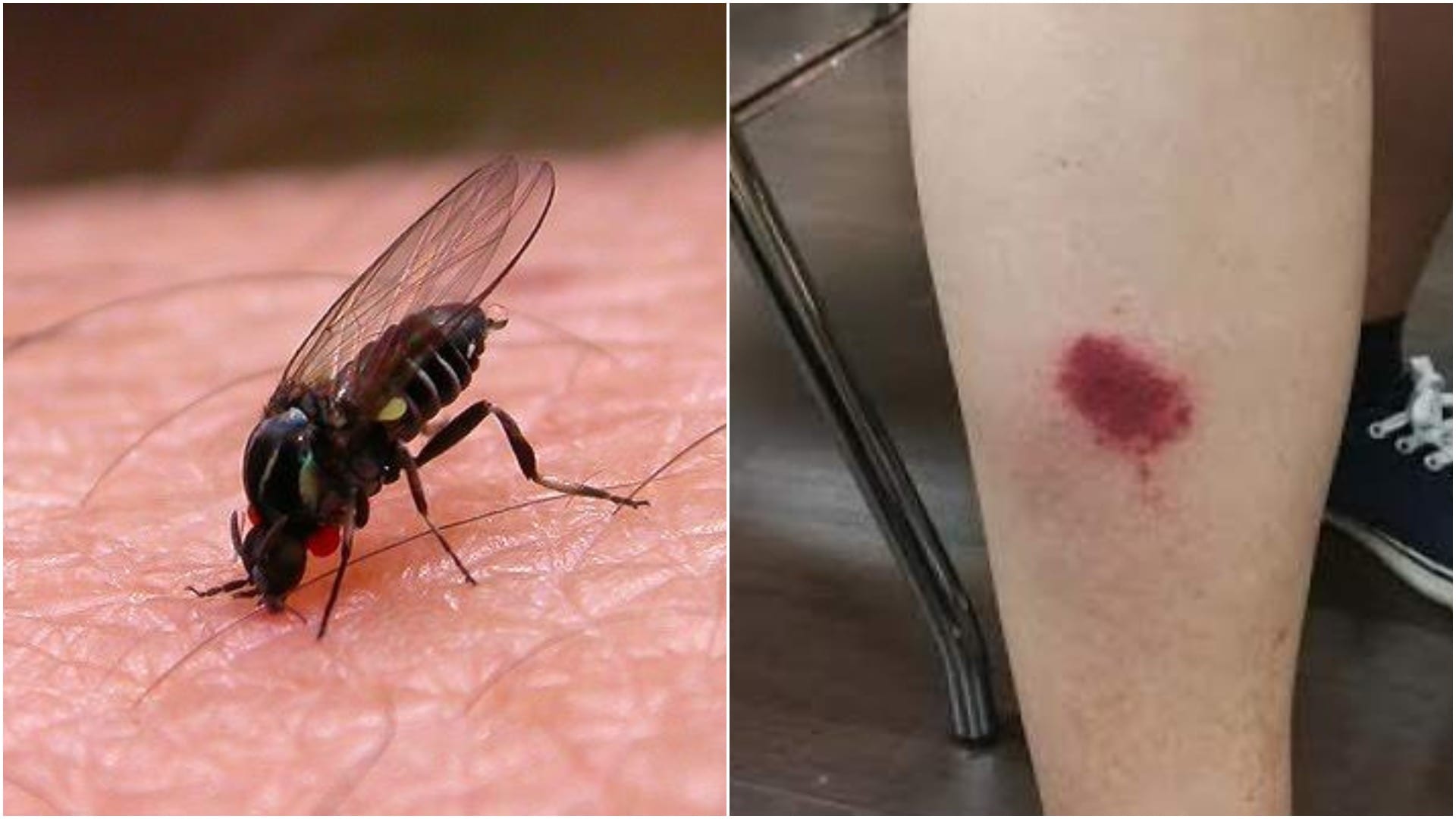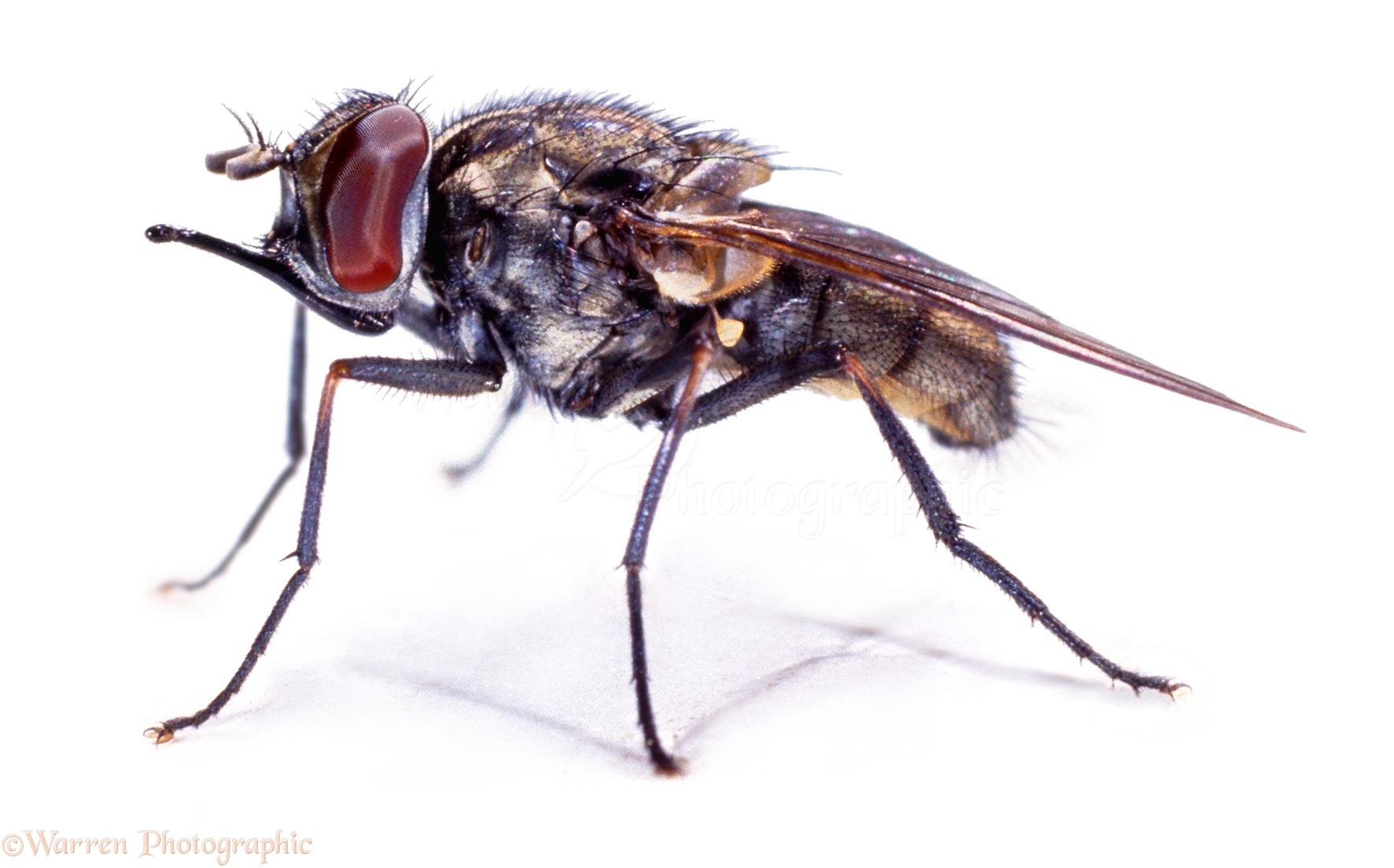Hot weather BLOODSUCKING flies warning Plague causing nasty blisters to invade UK Daily Star
Horse and deer flies are annoying biting pests of wildlife, livestock, and humans. Their blood sucking habits also raise concerns about possible transmission of disease agents. You are encouraged to learn more about the biology of horse and deer flies to avoid being bitten and to understand the public health risk posed by these insects.

Blood Sucking Fly, Helina depuncta, Muscidae, Diptera Stock Photo Alamy
The bites of black flies cause different reactions in humans, ranging from a small puncture wound where the original blood meal was taken to a swelling that can be the size of a golf ball. Reactions to black fly bites that collectively are known as "black fly fever" include headache, nausea, fever, and swollen lymph nodes in the neck.

Black Horse Fly A blood sucking bug. " Tabanus atratus " F… Flickr
UNDATED (CNN/CNN Newsource/WKRC) - A blood-sucking fly has caused infections across United States. Sand flies are tiny tan flies, which are about the quarter of the size of a mosquito.

Watch out, there's a bloodsucking fly about! Daily Mail Online
Stable Fly. The stable fly (Figure 3), also known as the dog fly, is a blood-sucking pest that closely resembles the house fly. It is similar to the house fly in size and color, but is easily recognized by its large, piercing mouthparts, which project forward from the head. Unlike many blood-feeding insects, such as mosquitoes, both sexes of.

Bloodsucking Flies Have Been Spreading Malaria for 100 Million Years
2. Sandfly Image Source The sandfly is a small, blood-sucking insect that commonly infests houses. These bugs are usually found near sources of water, such as in damp basements or near leaky pipes. Sandflies are not only a nuisance, but they can also transmit diseases to humans and animals.

Biting, bloodsucking stable flies drive Upstate anglers/boaters crazy
Two butterflies of the genus Erebia sucking fresh blood from a sock Hematophagy (sometimes spelled haematophagy or hematophagia) is the practice by certain animals of feeding on blood (from the Greek words αἷμα haima "blood" and φαγεῖν phagein "to eat").

Blood sucking horse fly stock image. Image of human, pain 20251081
Stable Fly Scientific Name: Stomoxys calcitrans Despite being a housefly look-alike, the stable fly is a non-friendly species notorious for sucking human and animal blood. Worse still, the fly originally from the Eurasian region is now a worldwide unwelcome occupant.

Meet the 'vampire' bugs which spend every waking moment looking for ways to extract
Mease JA. 1943. Deer fly desensitization. Journal of the American Medical Association 122: 227. Philip CB. 1947. A catalogue of the blood-sucking fly family Tabanidae (horse flies and deer flies) of the Nearctic region north of Mexico. American Midland Naturalist 37: 257-324. Shewell GE. 1947. The male of Diachlorus ferrugatus (Fab.). Canadian.

Bloodsucking flies capable of killing BIRDS spreading across Spain and they're to
What Are They? Black flies are tiny, blood-sucking flies in the insect family Simuliidae and are often called buffalo gnats or turkey gnats. Contrary to their name, black flies may be gray, tan, or even greenish. They usually breed in fast-moving water of streams and rivers. They are tremendous pests of humans, domestic animals, and wildlife every spring in northern areas of

This bloodsucking fly which loves hot weather can leave people seriously ill Nottinghamshire Live
Bloodsuckers as their name suggest, survive by sucking out blood from their prey's body. Different types of bloodsuckers have different ways of sucking out blood, and they perform their bloodsucking hack in different ways as well. Have you ever thought of why these bloodsuckers survive on the blood of the host?

Blood sucking horse fly by Joon Ng Photo 17780309 / 500px
Tsetse ( / ˈsiːtsi / SEET-see, US: / ˈtsiːtsi / TSEET-see or UK: / ˈtsɛtsə / TSET-sə) (sometimes spelled tzetze; also known as tik-tik flies) are large, biting flies that inhabit much of tropical Africa. [1] [2] [3] Tsetse flies include all the species in the genus Glossina, which are placed in their own family, Glossinidae.

Blood Sucking Fly, Helina depuncta, Muscidae, Diptera Stock Photo Alamy
Black Flies Similar to their mosquito cousins, it is only the female black fly (Simuliidae) that feeds on blood. Her razor-sharp mandibles cut the skin of mammals or birds so she can suck up a blood meal. Also like mosquitoes, black fly larvae are aquatic, but they prefer the flowing water of streams.

Photos Portraits of the BloodSucking Tsetse Fly Live Science
Blood Sucking Fly -. June 30, 2007. Size: 4mm Estimated. This fly landed on my left hand while I was taking some 'free hand' macros (no tripod). I decided to try and take some one-handed photos of it and these are the results. Unfortunately, I didn't realize that it was going to suck my blood when I started the process.

Stable Fly photo WP04637
Not all march fly species need blood. While protein in blood boosts egg production, some species can produce a smaller clutch of eggs using only nectar and larval resources. One beach dune.

Bloodsucking, diseasecarrying horse flies invade the UK
The common name "sand fly" at times is applied to members of the biting midge family Ceratopogonidae and the black fly family Simuliidae, but it usually is reserved for blood-sucking species in the subfamily Phlebotominae of the family Psychodidae. There are an estimated 600 species of phlebotomine sand flies in the world, including 14 species.

Blood Sucking Insects 11 Types of "Blood Suckers" and How to Identify Them? Pest Wiki
Tsetse Fly Hands. (Image credit: Geoffrey M. Attardo, Research Scientist, Yale School of Public Heath) The newly sequenced tsetse genome reveals possible weaknesses that researchers could use to.